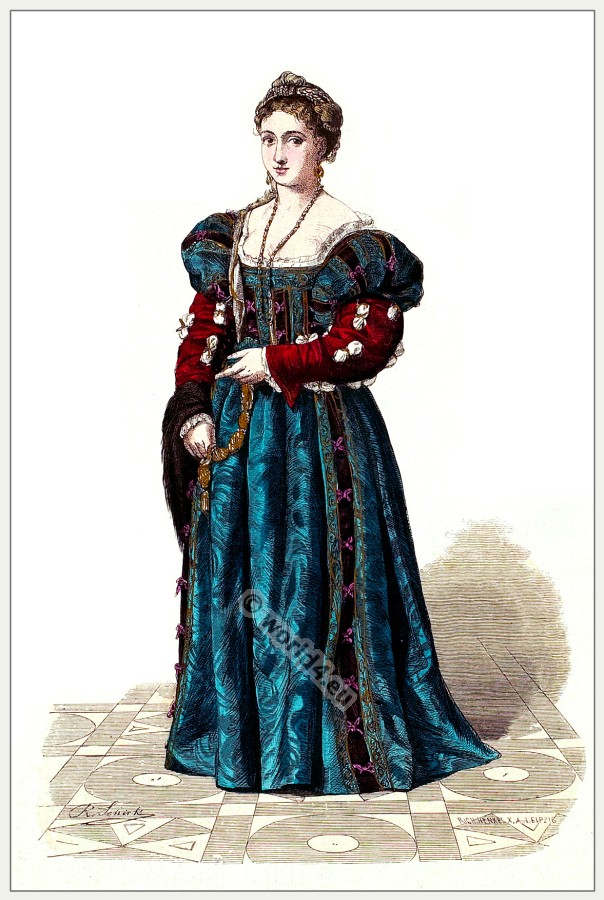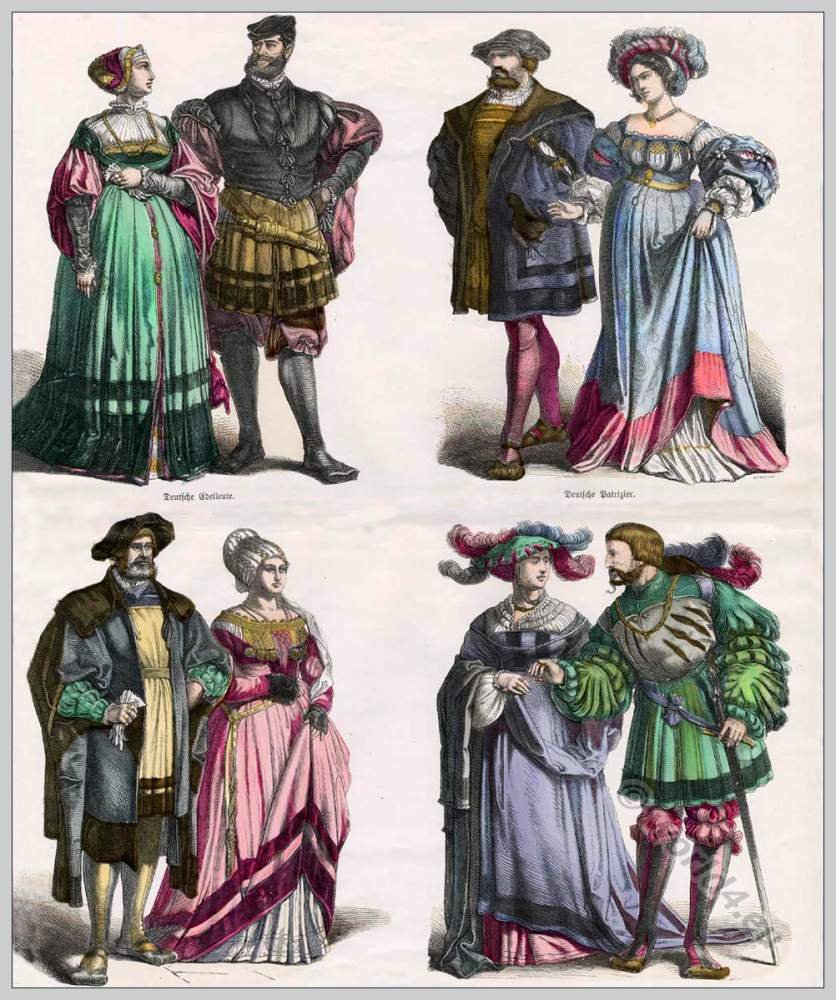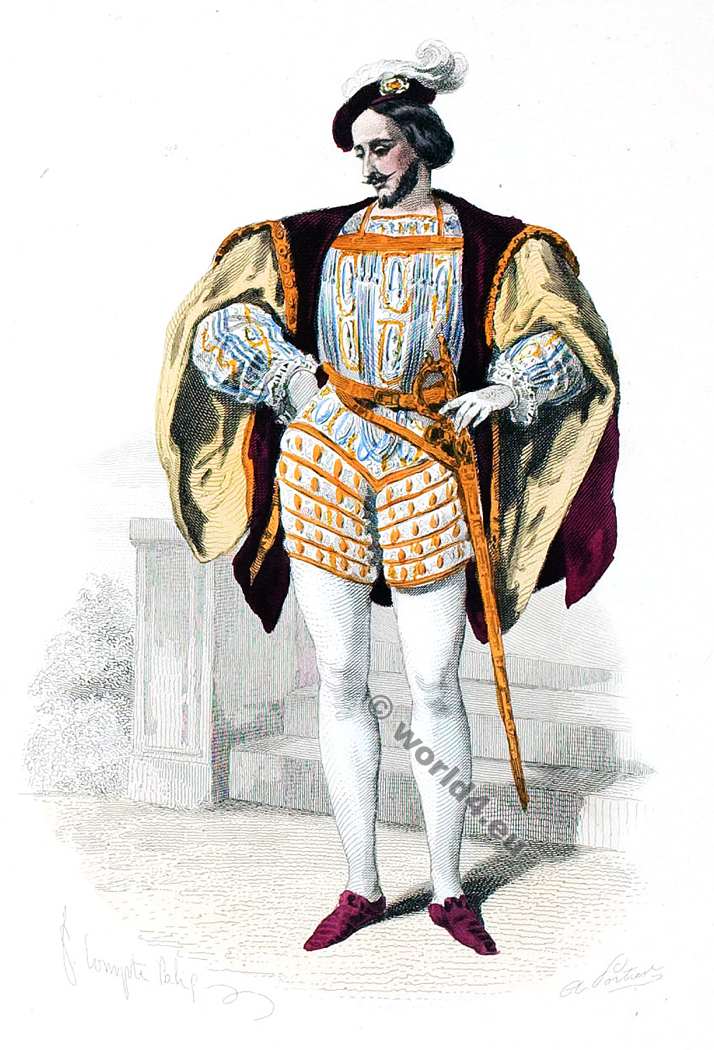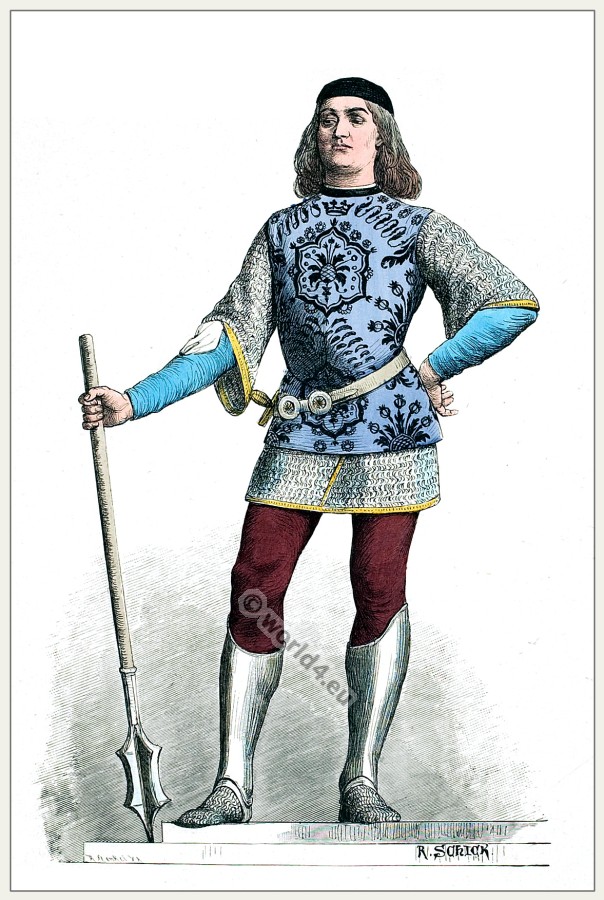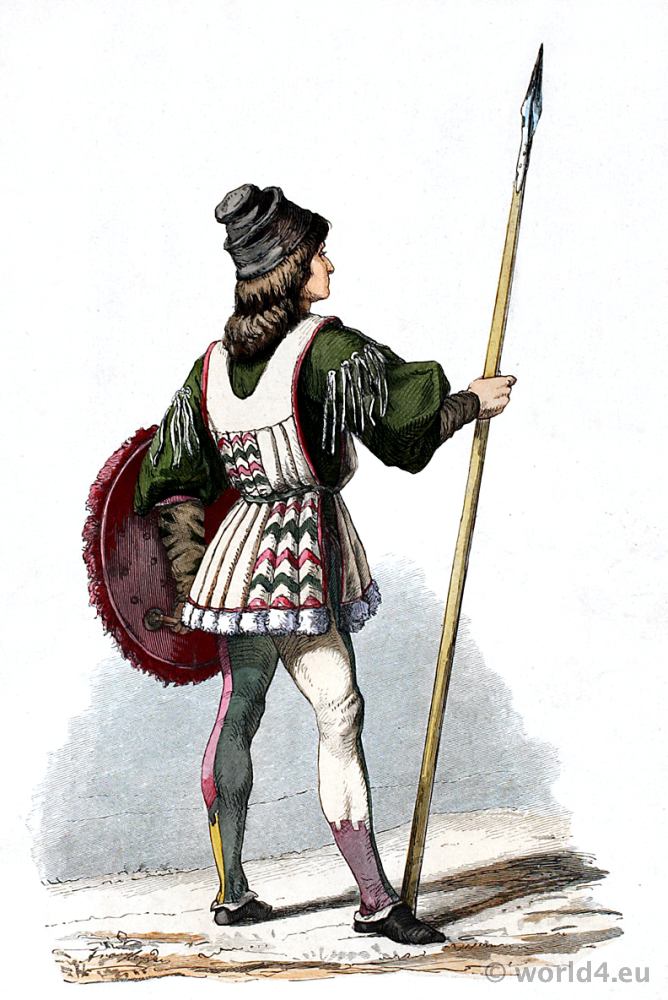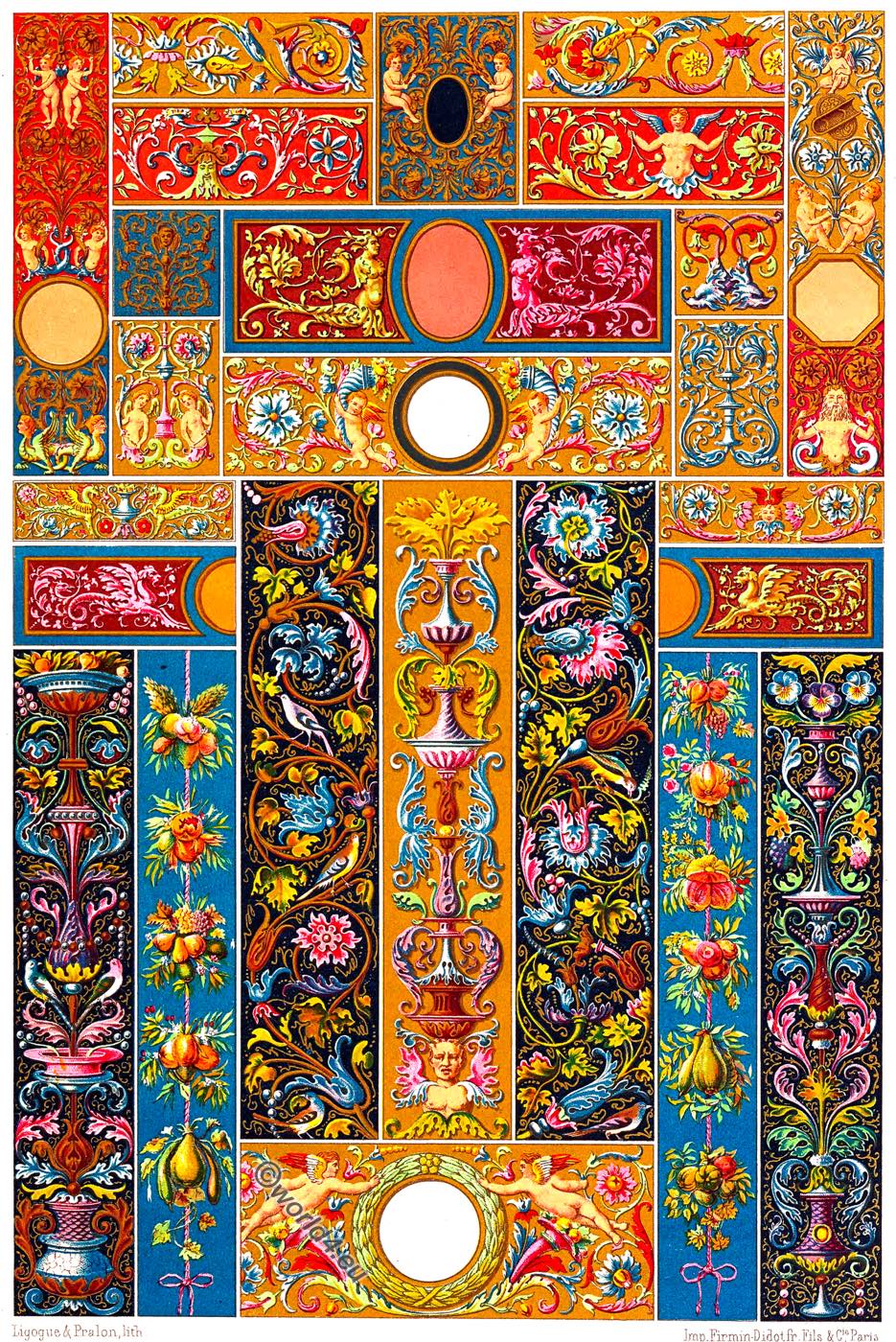
RENAISSANCE. PAINTINGS ON MANUSCRIPTS AND FRESCOES.
Plate LVII.
THE subjects represented in this plate belong to the finest period of the Renaissance, when the art of the Italian miniature-painters had attained its highest pitch of perfection. Vasari speaks with great praise of three Florentine ornamentalists, Stefano, Gherardo, and Attavante or Vante, who were especially distinguished for the excellence of their productions.
- No. 1. — Missal for the dead, painted for Pope Paul II. about 1450. (Chigi Library, at Rome.)
- No. 2. — Manuscript from the library of Mathias Corvinus *), painted by Attavante or Gherardo about 1492.
- Nos. 3, 4, 5, 6, 7. — Antiphonals from Florence, by Attavante; from 1526 to 1530.
- Nos. 8, 9. — Diurnal, large folio, signed Attavante di Gabriello.
- Nos. 10, 11. — Manuscript from the library of the Princes Barberini, at Rome, by Attavante.
- Nos. 12, 13. — Fragments from Raphael’s decorative frescoes in the Vatican, probably painted by Giovanni da Udine, his pupil.
- Nos. 14, 15. — Miniatures from a missal of Cardinal Cornari, attributed to Raphael.
- Nos. 16, 17, 18, 19. — Lives of the Dukes of Urbino; (Vatican Library, at Rome.)
- Nos. 20, 21, 22, 23, 24. — Horarum preces cum kalendario, Monasterii Terinent, dated 1554, in the possession of M. Amb. Firmin Didot.
*) Matthias Corvinus, actually Hunyadi (Hungarian Hunyadi Mátyás, Romanian Matei Corvin, Croatian and Serbian Matija Korvin, Slovak Matej Korvín, Czech Matyáš Korvín, Slovenian Kralj Matjaž for “King Matthias”; 23 February 1443 in Cluj, Transylvania; † 6. April 1490 in Vienna), was King of Hungary from 1458 to 1490 and in personal union also of Croatia, 1469 to 1490 (Counter-)King of Bohemia and the conqueror of large parts of the Habsburg hereditary lands, which he ruled from Vienna from 1485 to 1490.
Source: Polychromatic ornament by Auguste Racinet. London, H. Sotheran and Co., 1877.
Related
Discover more from World4 Costume Culture History
Subscribe to get the latest posts sent to your email.



